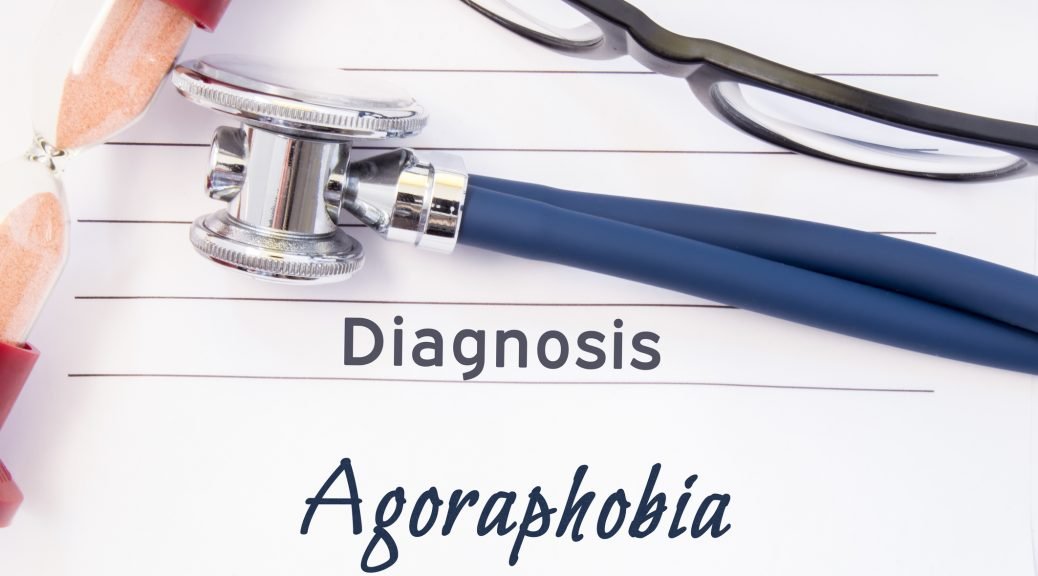Agoraphobia Symptoms and Treatment Overview:
The symptoms of agoraphobia may be the most prevalent of all of the anxiety disorders with as many as 5% of the general population or one in 20 people experiencing varying degrees of agoraphobic symptoms. In the United States, the only mental health disorder that experiences a higher level of prevalence may be alcoholism. Therefore, an understanding of agoraphobia symptoms, diagnosis and treatment is imperative to a well rounded understanding of panic and mental health disorders.
Agoraphobia symptoms:
From a practical perspective, agoraphobia is experienced as a fear of having panic attacks although the term actually refers to a fear of open spaces. An individual experiencing agoraphobia usually has an intense fear of having a panic attack and being in a circumstance in which escape is impossible. An individual may avoid such things as driving on highways for fear of having a panic attack, and being unable to escape the circumstances. Most people experiencing agoraphobia symptoms fear not only the panic attack , but being observed by others while having panic symptoms. Some of the more common circumstances avoided by agoraphobics are:
• Being trapped home alone.
• Being in areas where they feel enclosed such as while getting an MRI, tunnels etc.
• Being on public transportation and unable to leave if necessary such as on a bus or train.
• Being in places such as grocery stores or restaurants and other crowded places.
Agoraphobics frequently feel comforted when a “safe person” is present, which seems to help alleviate the agoraphobia symptoms. One of the more common features of this panic related disorder is a fear of being away from home and/or away from this “safe person”. A “safe person” may be a spouse, parent or anyone whom you have a significant relationship with who provides some comfort in these anxiety provoking situations. You may have an intense fear of driving or walking alone or experiencing any other circumstance without this “safe person”.
Most people who are agoraphobic have a relatively high level of anxiety most of the time. Much of this anxiety seems to be anticipatory, fearing future circumstances and situations which may provoke a panic attack, such as a fear of being left alone at home in the future. The severe restrictions on your life related to future panic attacks may also result in depression. Some people experience depression when they are in adverse circumstances that they have no control over which seem unescapable.
Agoraphobia Symptoms and Panic Disorder:
Agoraphobia develops as a result of having panic attacks or panic disorder. At the very beginning you may have panic attacks that occur for no reason, eventually resulting in a panic disorder. Later you begin to recognize that these panic attacks are occurring in specific situations and you begin to avoid those circumstances for fear of having continued panic attacks. These panic symptoms may be mild at the beginning resulting in uncomfortable feelings but not necessarily avoiding these specific circumstances. When experienced at a more moderate level the panic symptoms begin to result in avoidance of these panic inducing circumstances such as avoiding public transportation or shopping on your own. In these moderate anxiety circumstances, you may avoid some panic inducing situations but still continue on without serious restrictions on other aspects of your life. The restriction is usually only partial. When experiencing severe agoraphobic symptoms, you may experience restrictions which seem to affect every aspect of your life, resulting in being unable to leave home unaccompanied.
It is not really known why some people develop agoraphobia from their panic attacks and why others do not, or why agoraphobia is more severe for some rather than others. Some clinicians and researchers believe that the development of agoraphobia may have some environmental and hereditary components. It has been observed to run in families and twin studies have found that identical twins have a higher risk for both to develop agoraphobia. When looking at environmental factors, there may be some childhood experiences that predispose a child to agoraphobia. Some of these experiences may include growing up with parents who (1) are overprotective and/or (2) are overly anxious and communicate that the world is a “dangerous place” and/or (3) overly critical and perfectionistic.
People experience agoraphobia symptoms from all walks of life and all socioeconomic levels, At the present time, approximately 80% of agoraphobics are women. It is unclear what environmental issues factor into the gender difference, although it has been noticed recently that the level of agoraphobic women relative to men with the disorder seems to be leveling off somewhat. That would probably indicate more of a environmental than a genetic influence.
Agoraphobia Symptoms and Treatment:
There are various treatments available to help alleviate the symptoms of agoraphobia. Since agoraphobia is basically a disorder developed in relation to panic disorder and panic attacks, the same treatments are utilized for both including psychosocial treatments and the management of panic attack symptoms utilizing anxiety medications and antidepressant medications. An overall analysis of the medication management of panic disorder and panic attacks as well as an overview of the psychosocial treatments of panic disorder follow on separate pages.
Some of the main psychosocial treatments include relaxation training, panic control therapy and interoceptive desensitization. Once again, the same treatments that are utilized for panic disorder and panic attacks are also used for patients with agoraphobia. Also, additional assistance or treatment for agoraphobia symptoms may also include assertiveness training since agoraphobics frequently have difficulty standing up for themselves. Finally, as mentioned previously, some of the main treatments for agoraphobia include medication, graded exposure, cognitive therapy and group therapy.
Agoraphobia Treatments with Medication:
Some of the main treatments for agoraphobia as well as panic attacks and panic disorder include treatment with medication such as selective serotonin reuptake inhibitors (SSRI’s) such as, Zoloft and Paxil and tranquilizers such as Xanax, Ativan or Klonopin. The SSRI’s are more likely to be used in very severe cases where a person is homebound and otherwise very restricted in their activities of daily living. Low doses of tranquilizers such as Xanax may also be used to assist people who are going through the early stages of exposure treatment as well as being used by many doctors as a mainline treatment for anxiety and panic.
Graded exposure treatment for Agoraphobia:
When the treatment or intervention is referred to as “exposure” therapy it usually means that the person is exposed to the stimuli that seems to provoke the anxiety or panic reaction. Situations or circumstances that have been feared and/or avoided are exposed to the individual in incremental steps to gradually increase the amount of time and exposure without having a full-blown panic attack. A good example of graded exposure may be if a person has a severe fear of driving long distances or on the highway. They may initially drive short distances or at slower speeds and build up to greater distances or greater speeds. Sometimes a support person is used to accompany the agoraphobic. Finally, they may then eventually be able to drive alone. If a person is fearful of staying home alone, they may be at home by themselves for short periods of time building up to longer times alone.
Cognitive Treatment to Alleviate Agoraphobia Symptoms:
The goal of cognitive therapy is to help the individual recognize and eliminate exaggerated, fearful thinking which result in phobias and panic attacks in a more realistic way. You will then learn to identify, challenge and ultimately replace counterproductive thoughts with ones that are more helpful and realistic to the stimuli or environment.
Group therapy:
Agoraphobia symptoms can be effectively treated in a group setting with other individuals experiencing similar symptoms and disorders. Group therapy provides an opportunity for an individual to share their experiences with others and recognize that they are not alone and that there are many others who experience agoraphobic related panic attacks.
Agoraphobia Symptoms and Treatment: Some Final Words
Agoraphobia symptoms are successfully treated through the use of several psychosocial interventions and medications to alleviate the symptoms. Additional information is also available on this website related to panic disorder, psychosocial interventions and medication management. Do not allow yourself to continue to suffer agoraphobia symptoms when treatment is so readily available.
Some information adapted by Paul Susic Ph.D. Licensed Psychologist from The Anxiety and Phobia Workbook by Edmund J. Bourne Ph.D.




